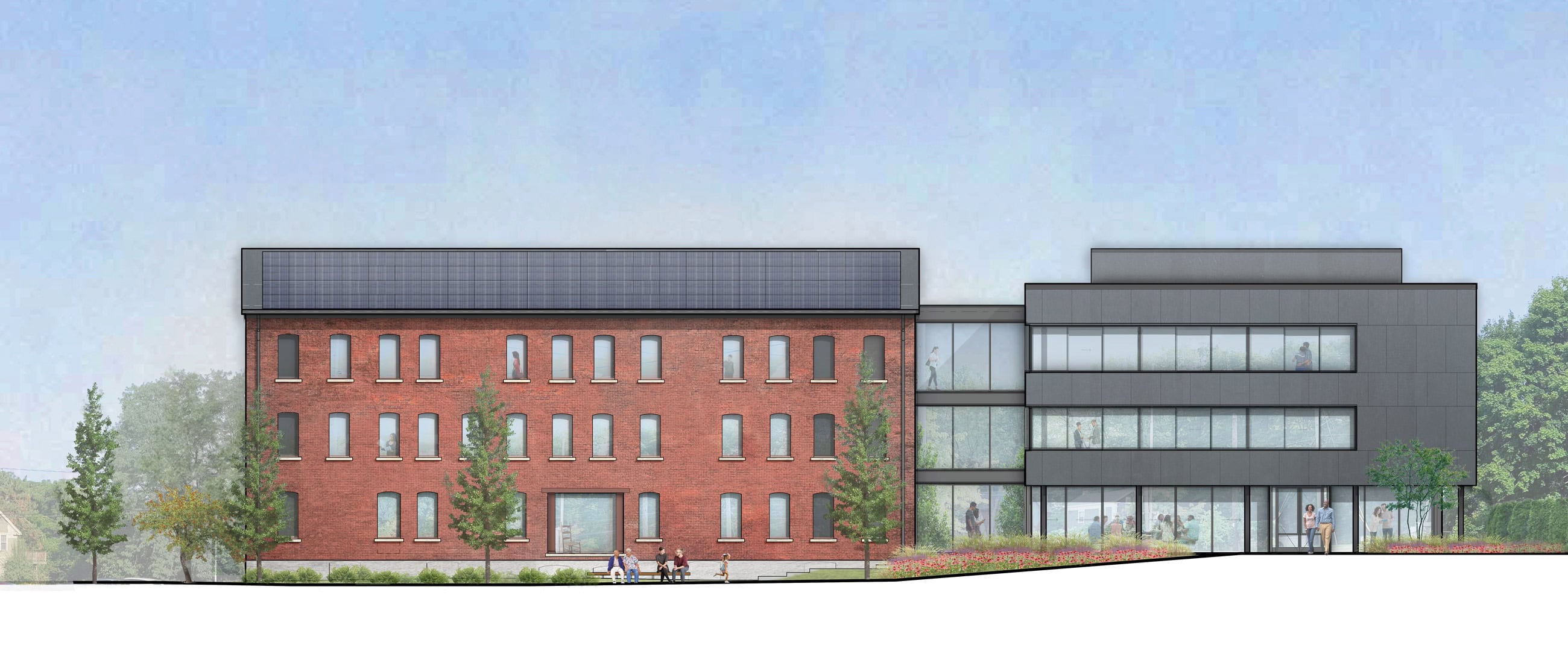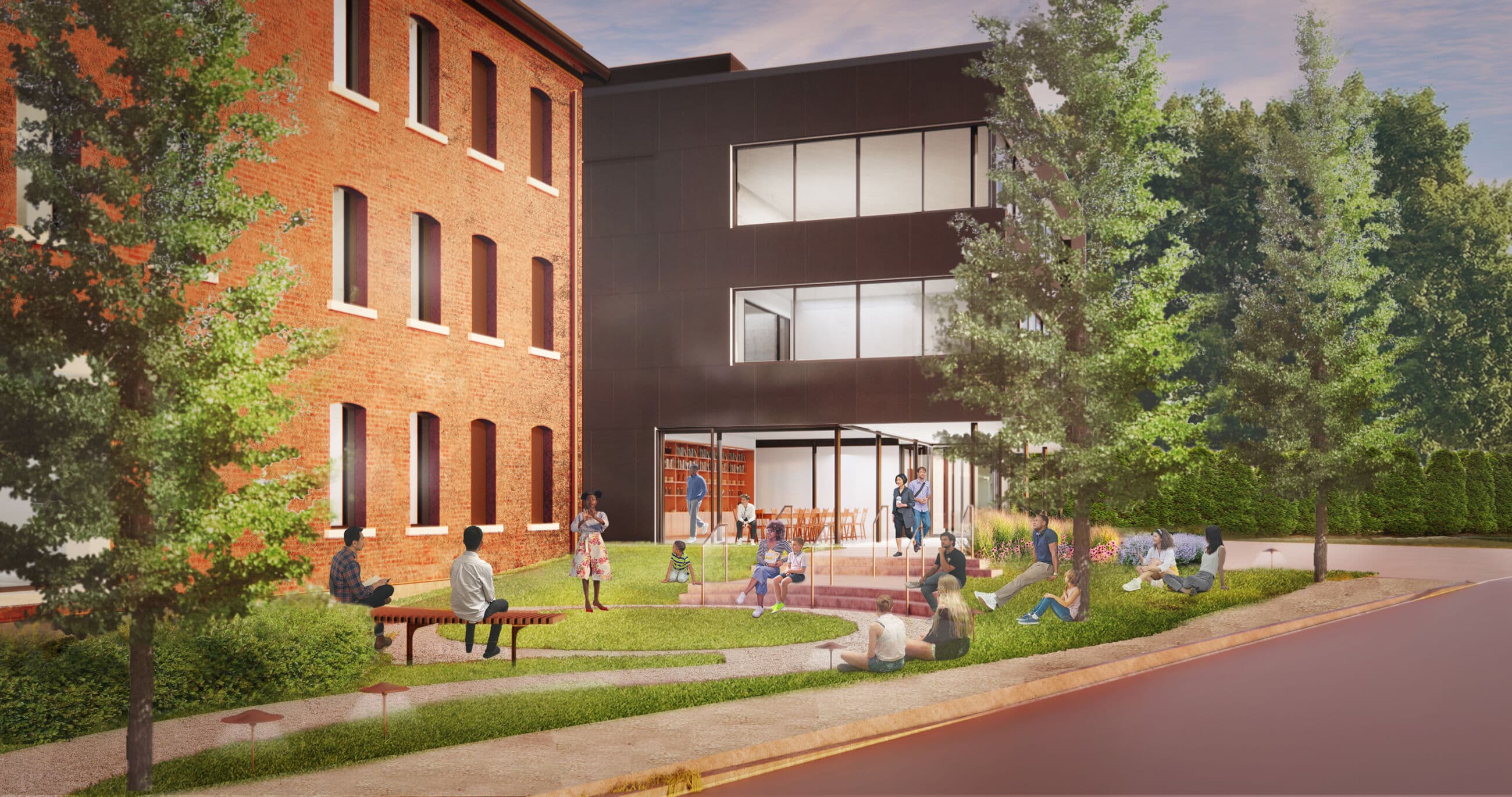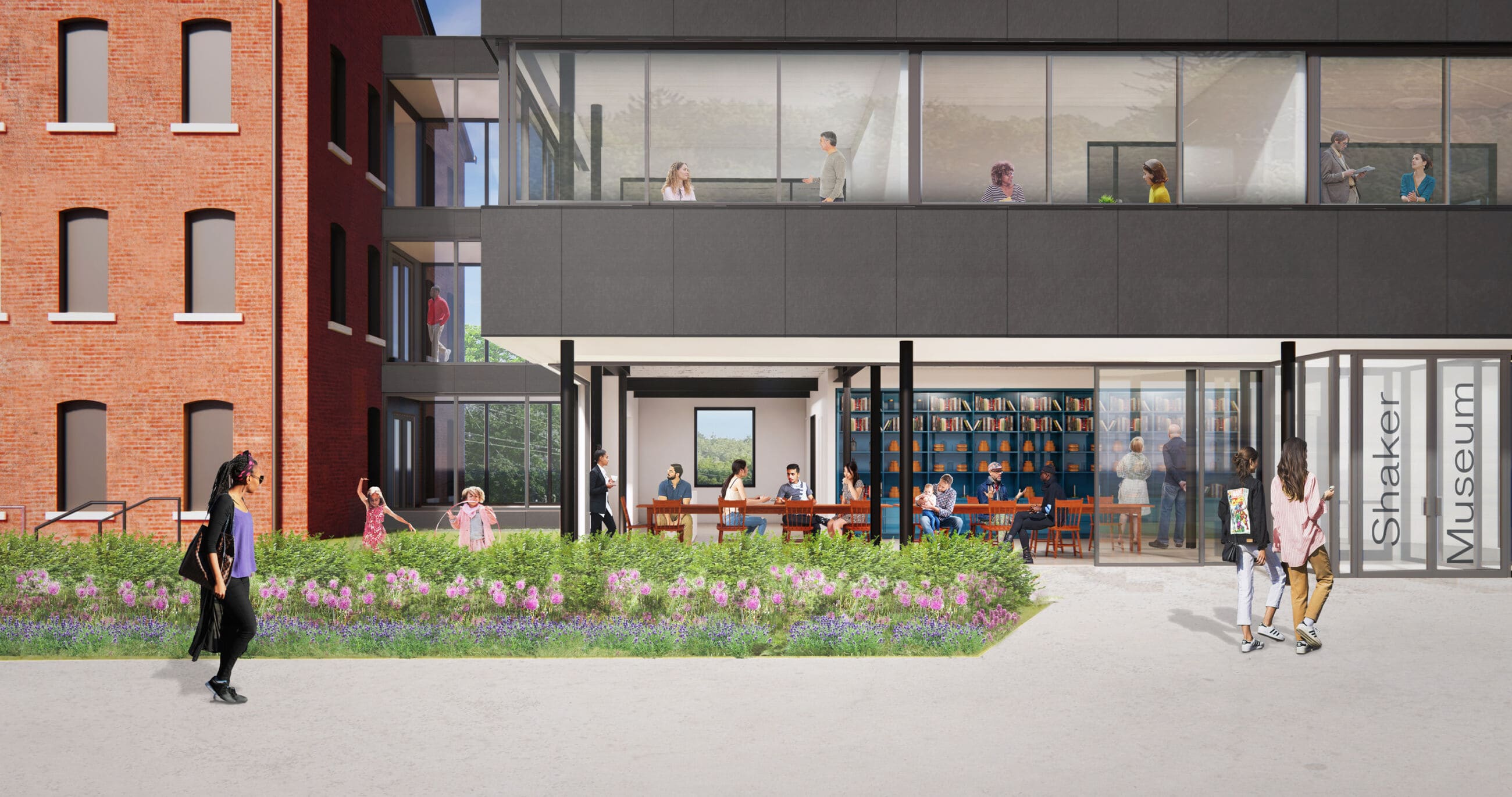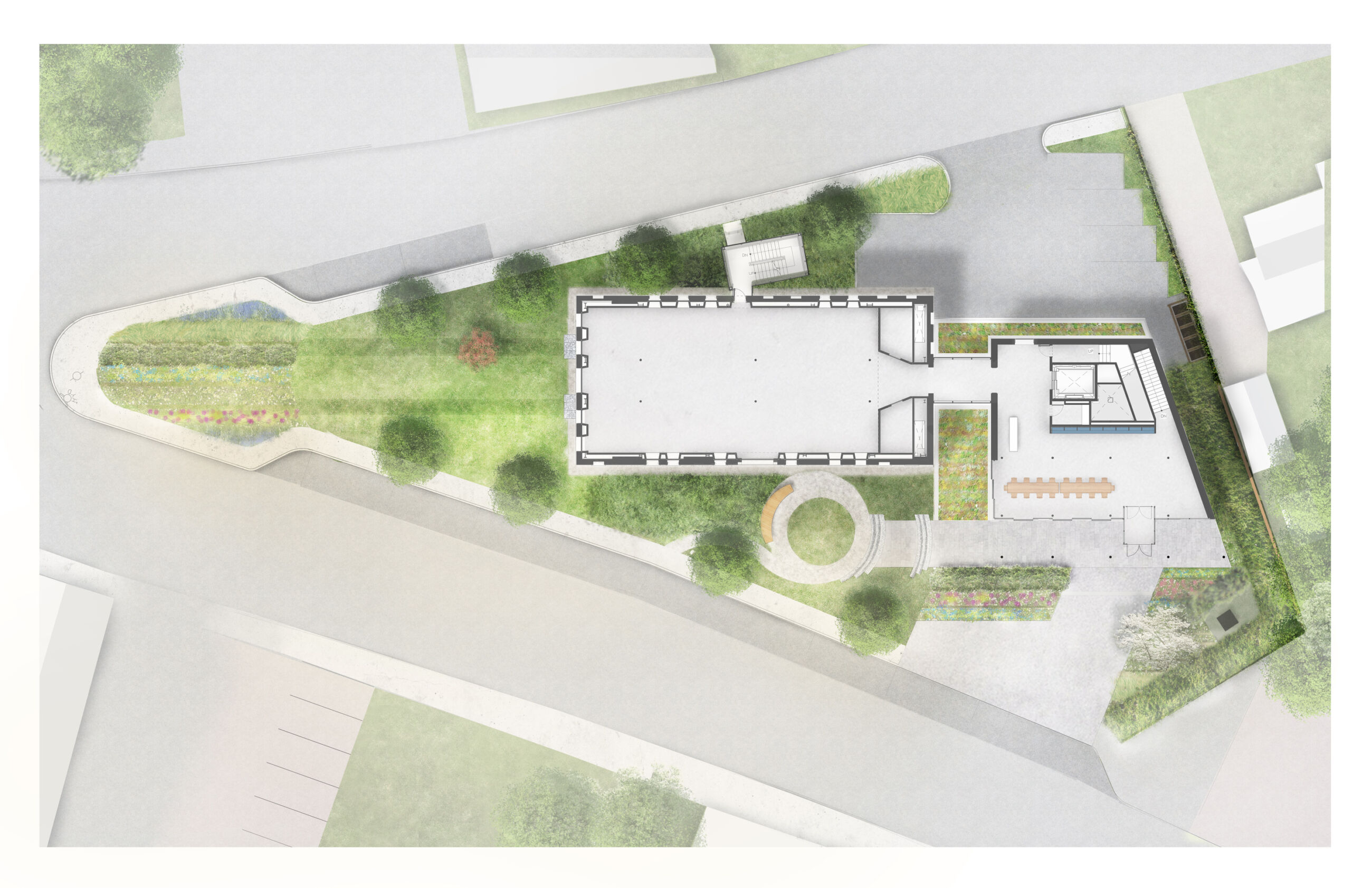
The new Shaker Museum, in Chatham, New York, will contain galleries, a public reading room, community space, and a conservation and storage facility. The site has an existing three-story, 19th-century brick structure that will be carefully restored and repurposed, in keeping with the Shakers’ ethos, and serve as the primary location for the museum’s collection, education and exhibition programs, and community gatherings. The Shaker Museum presents the group’s history and artifacts within the context of those values, which are of central importance to the Shaker Museum’s mission.
Read more Close
Today, the Shaker religious sect is widely admired for the beautiful, utilitarian objects they created and for embodying a simple way of life. Less well known are the Shakers’ values of racial and gender equality and inclusion, sustainability and resourcefulness, and strong sense of community.
Emphasizing order and clarity, the rhythm and proportion of the windows will be retained and the brick repaired. A new steel structure will provide stability and to allow the removal of some columns to provide more clear space for exhibitions. A required external fire egress stair, wrapped in metal mesh, is placed at the back of the building, where it echoes a structure that previously stood there.
A contemporary addition, in contrast but in balance to the original brick structure, will house the new museum’s entrance, ticketing, a small café and gift shop, offices, and a conference room. Dark grey, fiber cement panels, a simple, functional selection in line with the Shakers’ values, clad the three-story addition, which is connected via a glass link, distinguishing old from new. Structural Cross Laminated Timber will be used as the structural floor for both buildings.
Referencing the brick structure’s original covered porch, since lost, the entrance to the new addition is set within its own “covered porch.” Sliding doors allow the new lobby space to open to the porch and community area beyond. A Shaker-inspired sustainable landscape by the firm Nelson Byrd Woltz is made of medicinal and native plants and includes a small amphitheater. Composed of concentric bluestone circles loosely based on Shaker dances, it will serve as a community gathering place for events, performances and readings.
- Client:Shaker Museum
- Location:Chatham, NY
- Size:27,000 sf (total); 11,950 sf (new); 15,150 sf (renovation)
- Date:Ongoing







